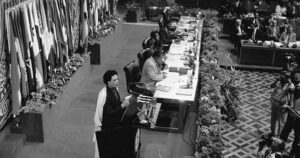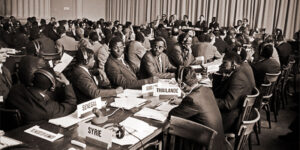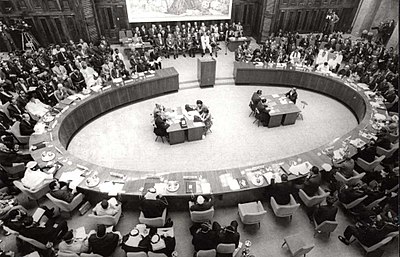While Uganda is gearing up to host the two international summits of the 19th Non-Aligned Movement (NAM) to be held from January 15-20, 2024, under the theme Deepening Cooperation for Shared Global Affluence and the 3rd South Summit of the Group of Seventy Seven+China (G77+China) scheduled to take place from January 21-23, 2024, under the theme Leaving No One Behind, all at the Commonwealth Speke Resort Munyonyo in Kampala, it’s imperative to understand the originality of the two summits and the motives and ideas that were behind the founding members or why they came into existence.
The notion of NAM adopted during the Asian-African or Afro-Asian conference of April 18-24, 1955, in Bandung, Indonesia was founded with the view of advancing the interests of developing countries in the context of Cold War conflicts after the founding members (Josip Broz Tito of Yugoslavia, Gamal Abdel Nasser of Egypt, Jawaharlal Nehru of India, Kwame Nkrumah of Ghana, and Sukarno of Indonesia) adopted the ten ideologies referred to as the Bandung, a name that was selected because that’s the city where the conference was held, in order to guide the operations of the new international bloc.
A conference attended by several delegates from 29 governments, mostly from Asia, was aimed at attaining the independence of these countries since the majority of African countries at the time were still under colonial rule and ensuring the economic development of the said countries.
In 1961, the birth of NAM gained new strides during the first summit that was held from September 1-6, 1961, in Belgrade, Yugoslavia, based on the principles that were established at the Bandung Conference.
At that time, twenty-five countries, including Afghanistan, Algeria, Burma (Myanmar), Cambodia, Ceylon (Sri Lanka), Congo-Leopoldville (the current DRC), Cuba, Cyprus, Egypt, Ethiopia, Ghana, Guinea, India, Indonesia, Iraq, Lebanon, Mali, Morocco, Nepal, Saudi Arabia, Somalia, Sudan, Tunisia, Yemen, and Yugoslavia, were recorded to have attended the summit.

Currently, the NAM, consisting of 120 countries that are neither pro-east nor pro-west, which include 53 countries from Africa, 39 from Asia, 26 from Latin America and the Caribbean, and two from Europe, is the second largest international organization of states after the United Nations (UN), which is still guided by the Bandung principles to give leeway to the Movement’s political agenda, notwithstanding the economic cooperation and social and humanitarian issues that have been pivotal in the workings of the NAM over the years.
NAM has been influential in advocating for peace and security, with its members being so vocal in ensuring a nuclear-free zone, fighting against terrorism, and supporting the United Nations’ efforts towards peacekeeping and peacebuilding since its principles are in line with those of the United Nations Charter.
Additionally, NAM has also played a fundamental role in directing international efforts towards addressing the impacts of the COVID-19 pandemic and ensuring that countries globally can firmly recover from it.
When it comes to the coordination and management of NAM business, it’s upon the hosting country or the country that is assuming the chairmanship, in this case Uganda, to ensure that this is appropriately done.
As Uganda will officially assume the chair of the organisation at the summit for a period of three years, from 2024 to 2027, on behalf of the African continent, having taken over from Azerbaijan, the chairmanship of NAM changes based on a geographical rotational basis. In this case, the vision statement of the Uganda Chairmanship for NAM will be A Stronger and United NAM that Contributes to a Better World for All.
Conversely, G77 was established by the seventy-seven signatories to the Joint Declaration of the Seventy-Seven Developing Countries issued at the end of the first session of the United Nations Conference on Trade and Development (UNCTAD) in Geneva on June 15, 1964.

Over the years, membership in the G77 has tremendously changed from the original 77 countries to 134 countries in the global south, though the group decided to maintain its original name due to its historical significance.
The Group of 77, which is the largest intergovernmental organisation of developing countries in the United Nations, provides the means for countries of the Global South to articulate and promote their collective economic interests, enhance their joint negotiating capacity on all major international economic issues within the United Nations system, and promote South-South cooperation for development.
Uganda, following Qatar in 2005 and Cuba in 2000, will be the third nation in history to host the South Summit. With a more competitive globe, the third South Summit seeks to infuse new energy into the 134 member states’ cooperation. Specifically in the areas of trade, investment, sustainable development, climate change, poverty eradication, and the digital economy, among others, the Kampala Summit seeks to strengthen the South-South Cooperation, the G77’s decision-making body.















